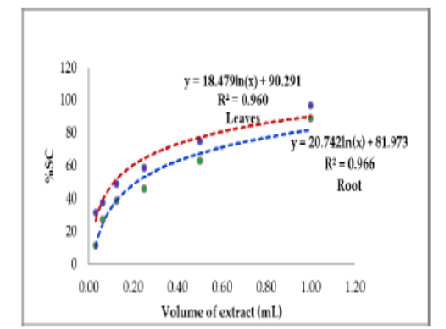


Indian Journal of Science and Technology
DOI: 10.17485/IJST/v16i44.2434
Year: 2023, Volume: 16, Issue: 44, Pages: 4114-4122
Original Article
Dang Thanh Long1*, Van Thi My Le2, Hoang Tan Quang1, Hoang Thi Ngoc Han3, Tong Thi Hue1, Nguyen Thi Quỳnh Trang4
1Institute of Biotechnology, Hue University, Hue city, Thua Thien Hue, 49000, Vietnam
2University of Sciences, Hue University, Hue city, Thua Thien Hue, 49000, Vietnam
3Department of Natural resources and Environment of Quang Tri, Dong Ha city, Quang Tri province, Vietnam
4University of Education, Hue University, Hue city, Thua Thien Hue, 49000, Vietnam
*Corresponding Author
Email: [email protected]
Received Date:24 September 2023, Accepted Date:16 October 2023, Published Date:29 November 2023
Objectives : In this study, we investigate the bioactive potential of Helicteres hirsuta Lour. (H. hirsuta L.). Methods: H. hirsuta collected in Thua Thien Hue province was used. The methanolic extract of roots and leaves was studied for its biochemical components based on the High-Performance Liquid Chromatography method and also tested for antioxidant activities Mention how the test was carried out and the endpoints considered. Findings : The results show that some biochemical components contained in the dry materials of H. hirsuta leaves and roots are safe and suitable, allowing use in the extraction and collection of total flavonoids. The optimal extraction conditions using the ultrasonic bath method included a time of 50 min, a material/solvent ratio of 1:20 (g/mL), ultrasonic frequency (12 Hz), and a solvent concentration of methanol of 50% (v/v). In this condition, the highest total flavonoid content obtained from H. hirsuta leaves and roots were 0.841 mg CE/mL extract (leaf) and 0.416 mg CE/mL extract (root), respectively. The DPPH free radical scavenging ability at 50% concentration (IC50) of leaf and root extracts varied with IC50 of 0.778 mL and 0.433 mL, respectively. The methanol extract from the leaf and root of H. hirsuta has the best inhibitory effect on the human liver cancer cell line Hep-G2 (IC50 leaf = 177.22 µg/mL, and IC50 root = 165.21 µg/mL). Novelty: The results of this study are valuable reference information for exploiting, using, and processing products from H. hirsuta trees collected in Thua Thien Hue in the future.
Keywords: Flavonoid, Helicteres hirsuta Lour., Flavonoid, Extract, Leaf, Root
© 2023 Long et al. This is an open-access article distributed under the terms of the Creative Commons Attribution License, which permits unrestricted use, distribution, and reproduction in any medium, provided the original author and source are credited. Published By Indian Society for Education and Environment (iSee)
Subscribe now for latest articles and news.